My trip to CES 2018, the big tech trade show in Las Vegas, is over. I walked more than 75,000 steps (35 miles) to scout for the best products and ideas that will keep the tech industry humming. I won’t pretend that I hit all 2.6 million square feet of space and 4,000 exhibitors.
I was impeded by my age, an unexpected torrential rain storm, and an unprecedented power outage that took down the giant Las Vegas Convention Center central and south halls for 90 minutes. But I came up with my list of the best of CES, and I hope you enjoy it.
I like how some of these ideas come from non-tech companies, much like Carnival cruise lines came up with its wearable for ocean cruises last year at CES. This year, I saw technology fade into the woodwork, and the woodwork came alive in a way that solved real problems. In many cases below, I can’t say that the particular device or company will succeed, but I sure want someone to nail the execution.
I love the fact that some of the smallest companies came up with some of the best ideas.
June 5th: The AI Audit in NYC
Join us next week in NYC to engage with top executive leaders, delving into strategies for auditing AI models to ensure fairness, optimal performance, and ethical compliance across diverse organizations. Secure your attendance for this exclusive invite-only event.
Roader
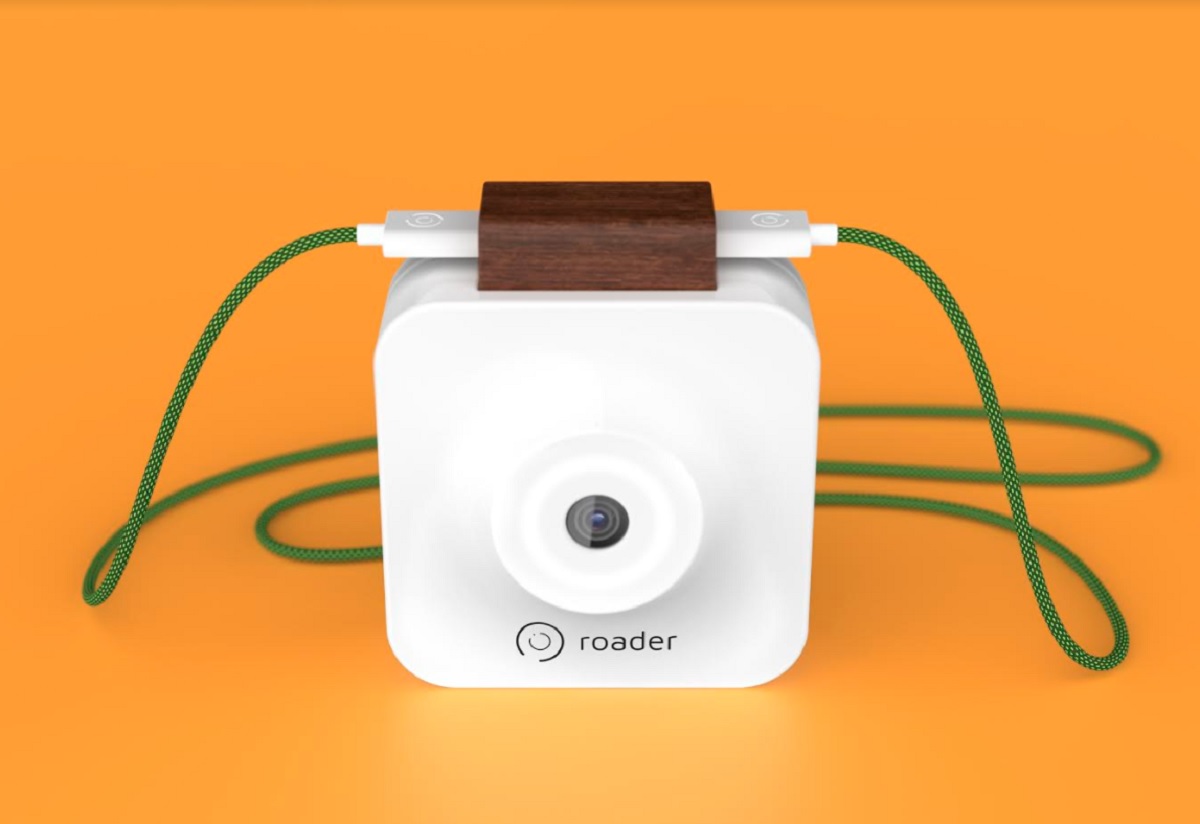
Above: Roader’s Time Machine Camera constantly records and captures the previous 10 seconds once you hit the capture button.
The Roader Time Machine Camera is a video camera that hangs around your neck. It doesn’t sound like much, but you can put it in ready mode, and it will record video, buffering the last 10 seconds in its memory. It can run for six or seven hours, recording and then not saving video beyond that last 10 seconds.
But when you hit the button, it will save that video — the last 10 seconds, as well as the next 10 seconds — in two threads. One is a small format thread which transfers in real time to your smartphone, where you can view it immediately. If you want it, you can download the full high-definition thread of the same video. And you can share it.
It’s like a time machine because it captures what happened 10 seconds earlier. If you had a regular video camera, or your smartphone camera, changes are you couldn’t open it quickly enough to catch the moment. But Roader captures those moments, like your baby’s first steps, for posterity. It is a brilliant idea, and using the humble video buffer — which is meant to enable smooth playback of video — in such a way could have many applications.
Henkel Beauty Care
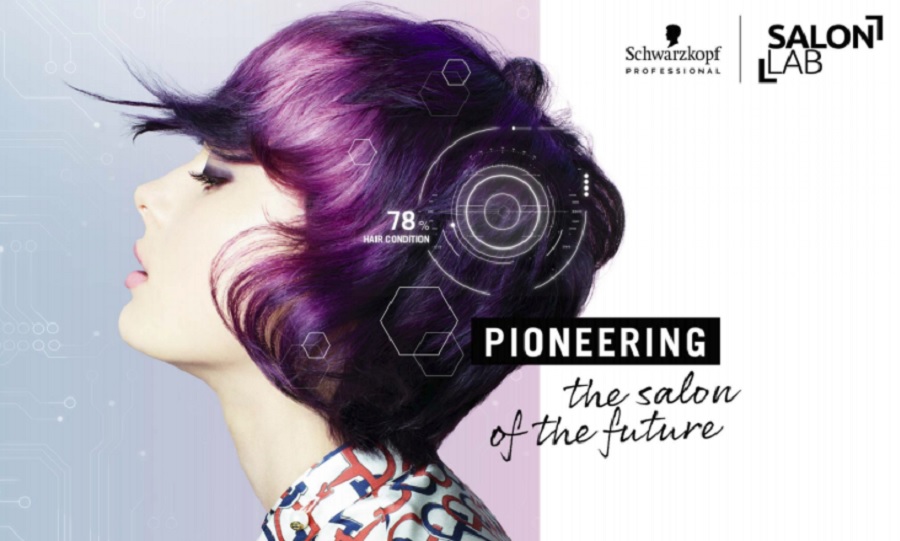
Above: Henkel can evaluate your hair’s condition.
Henkel Beauty Care SalonLab is one of those ideas that comes from a non-tech company: the 140-year-old Henkel, whose researchers saw a way to combine modern analytics, hair care expertise, and custom manufacturing.
They created a scanner that beauty salons can use to analyze your hair’s molecular structure. They get a quick recommendation from the scientists at Henkel’s Schwarzkopf Professional beauty consultants, and the salon can tweak the recommendation just for you. They get measurements on the tip, root, and middle sections of the hair to gauge its health. Then they recommend a shampoo to treat it.
Henkel’s SalonLab Customizer then creates the shampoo on the spot, and dispenses a personalized mix just for you. You can come back a few weeks later and see if it’s working, and that could lead to a tighter relationship between the salon and the customer.
Travis the Translator
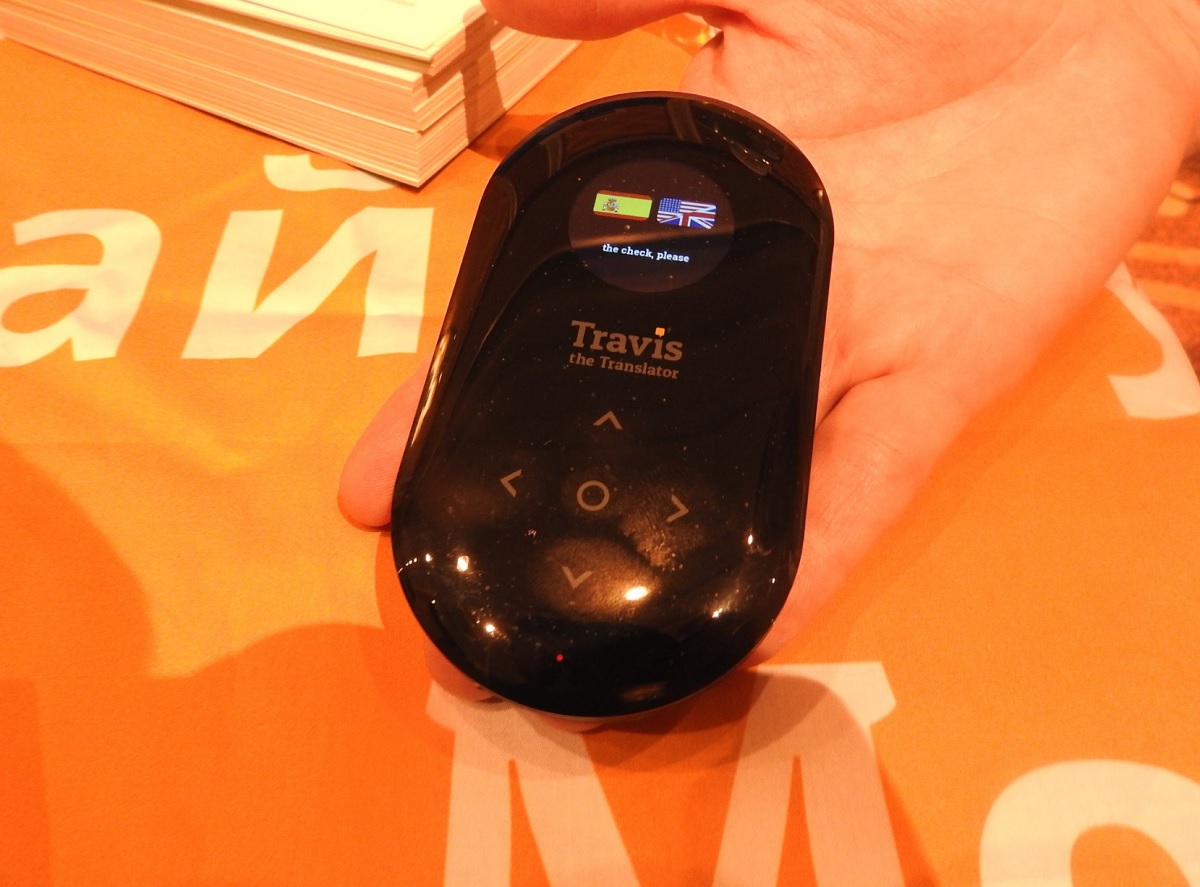
Above: Travis the Translator
Travis the Translator may or may not be the Babel Fish, the mythical automatic translation device from The Hitchhiker’s Guide to the Galaxy. And it has rivals such as Google’s Pixel Buds. But I love the idea that real-time translation is just around the corner, and it isn’t going to be terribly expensive.
Travis can understand 80 languages and translate a spoken phrase into any of those languages. I said “Como se llama?” in Spanish, and it messed up. But someone else corrected me, saying, “Como te llama?” Then Travis said, “What is your name?” We couldn’t get into extensive testing in the wireless noise of the Showstoppers party at CES, but I really hope that it works.
Travis the Translator costs $200 now, and that could be a small price to pay for bridging cultural divides that so many think should remain.
Roborace
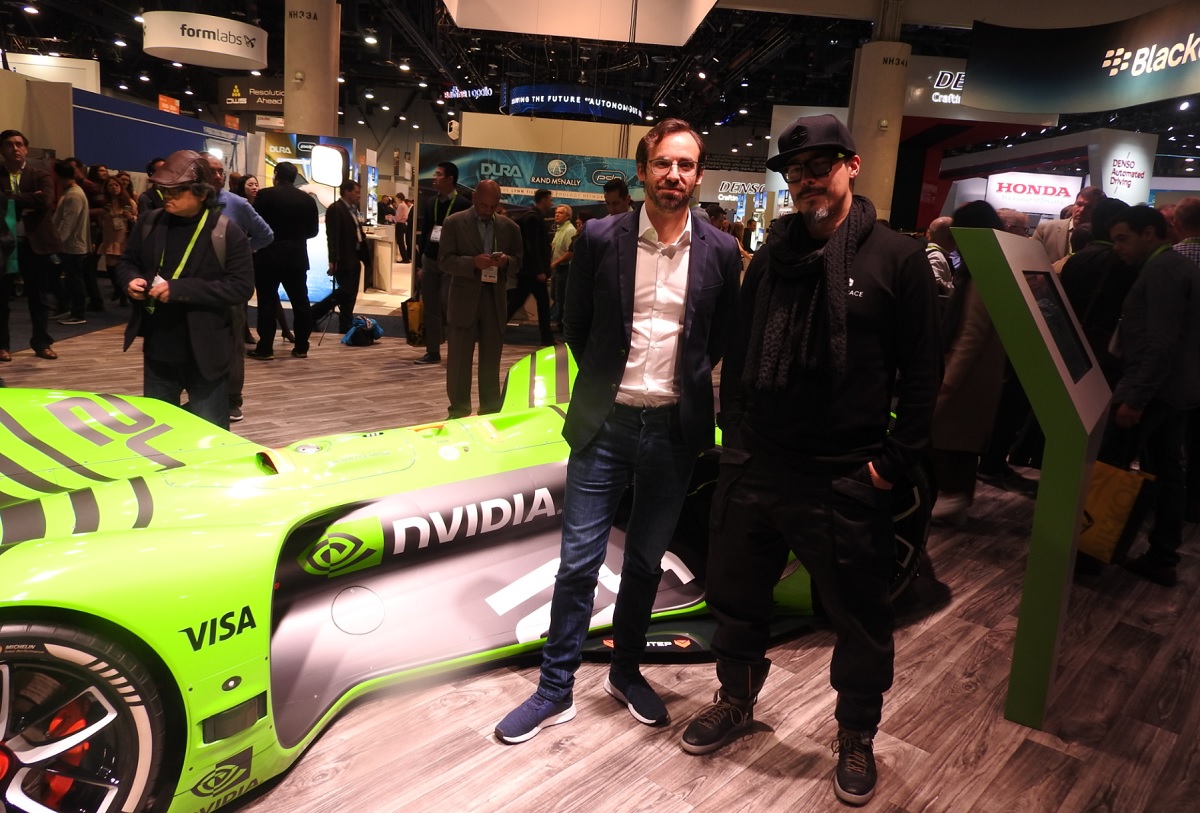
Above: Roborace CTO Bryn Balcombe and chief creative officer Rod Chong
Roborace started as a project a couple of years ago with a vision for improving self-driving car software through autonomous race cars. Nvidia’s booth featured a sleek prototype car that was missing one thing: the driver’s cockpit.
The car could be the foundation of a racing competition between the creators of autonomous car software. In this case, it isn’t always the fastest car that is the best. It’s the one that can avoid pedestrians and other obstacles on a course that isn’t a simple oval.
Rod Chong, who recently joined as chief creative officer, was previously a video game executive at Slightly Mad Studios, maker of Project Cars. He changed jobs to join the cool Roborace team to bring a gamer’s perspective to motorsport competition.
The Roborace car has a supercomputer based on Nvidia’s Drive PX technology, and a future version will use Nvidia’s new Xavier chip, which has 9 billion transistors dedicated to artificial intelligence processing. The hardware — the actual car — for the different teams will be the same, and the competition will take place in software. It could lead to better AI, much like early race cars led to the creation of disk brakes, Chong said in an interview.
Omron Heartguide
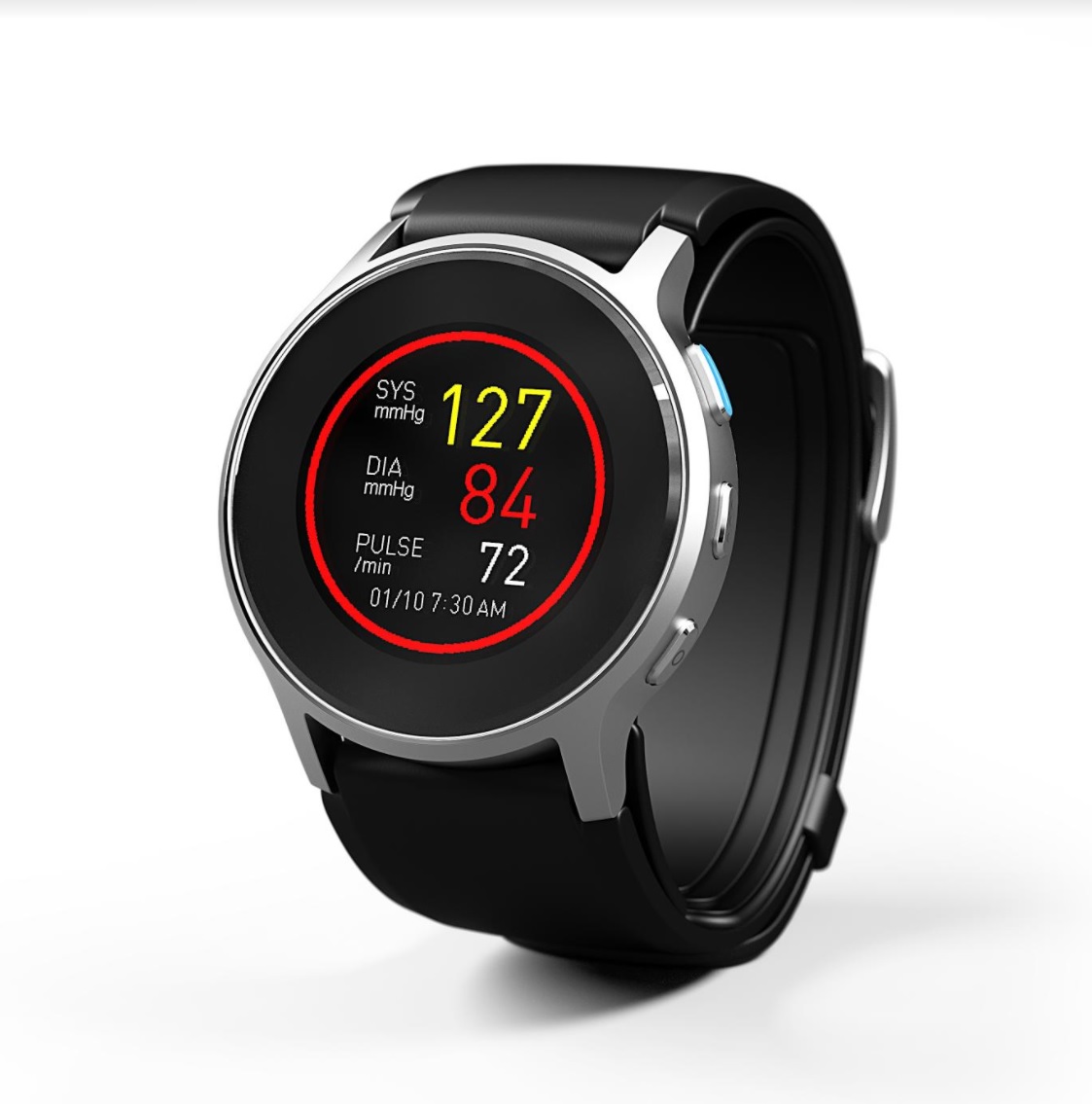
Above: Omron Healthcare’s wearable blood pressure monitor.
I’ve been waiting a long time for a wearable blood pressure monitor that could prevent people from having heart attacks. Medical giant Omron Healthcare showed off its Omron Healthguide, a wearable blood pressure monitor that you can wear as a wristwatch and that can deliver clinically validated accuracy.
The Japanese company has also created a digital platform to track and store heart health data and easily share it with your physician. Many companies have shied away from adding such a feature to heart rate monitors because of concerns about regulatory approval. But Omron is hoping to submit the device for approval this year.
It has an inflatable band inside the wristband. It can periodically inflate and then capture your blood pressure at different times in the day. It can do so in your sleep, as irregular blood pressure during rest can be an indicator of a serious health issue. The price hasn’t been set yet, and the company is targeting the fall for the launch.
Soundfi
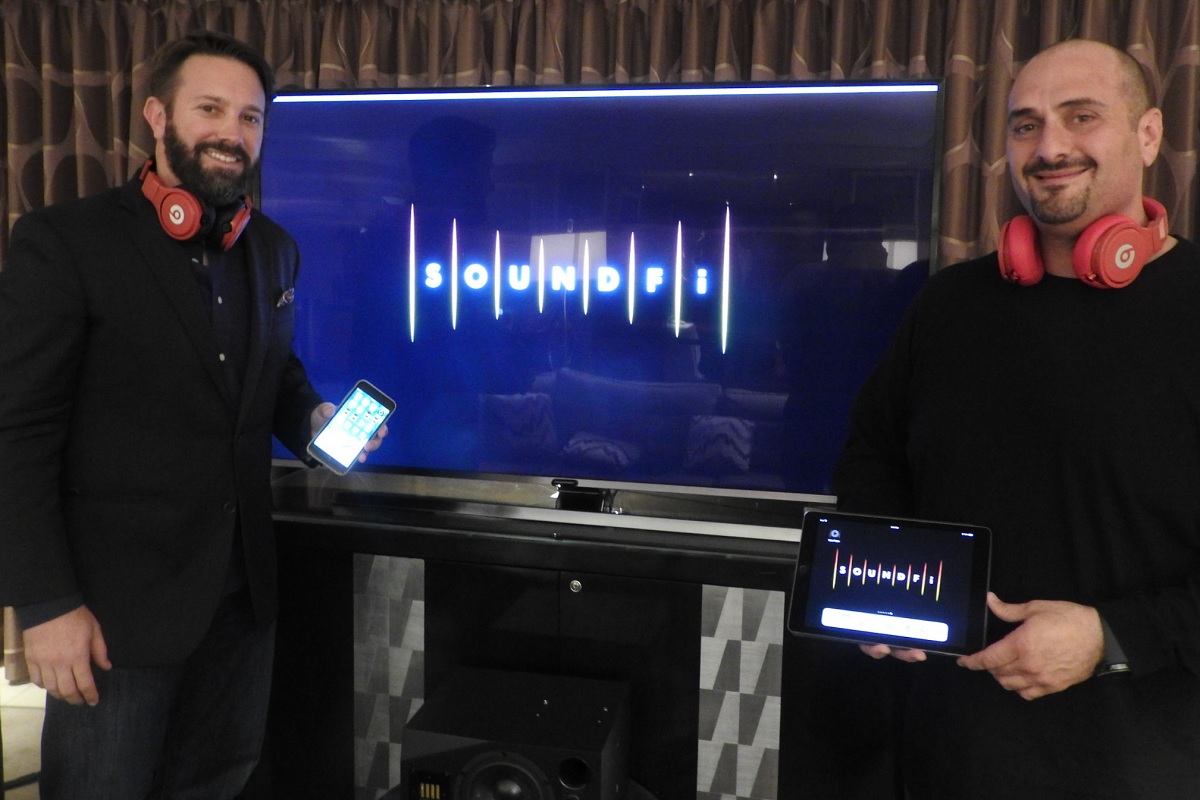
Above: Soundfi founders Bill Kehoe (left) and Chris Anastas.
Soundfi came out of stealth to talk about its plan to bring high-end spatial audio to ordinary headphones and smartphones. Soundfi’s new format for headphones adds the fluid sounds of a surround-sound system to your headphones. The startup is trying to create a premium headphone experience, and it modifies content in a spatial way, so that sports, movies, and other content can be fully enjoyed. You could even listen to the movie in a different language through the headphones.
I’m no audiofile, but I listened to it. And it sound fuller, louder, and had deeper bass than the headphones I’ve used in the past. Millennials in particular are listening and watching on their smartphones more than ever, but they’re forced to listen to rich audio with old-fashioned 2D stereo headsets.
“I’m using VR gaming with spatial audio, but I sit down to listen to a $250 million movie studio experience, and I have to listen to it in theater,” said Chris Anastas, founder and CEO of the Los Angeles firm, in an interview with VentureBeat. “Not every theater is an IMAX. We have a different way to listen to it.”
Soundfi-enhanced headphones could also be used inside a movie theater. You could take your own headset and your smartphone, allowing you to hear the sound for the movie through your headphones. It plays back a synchronized version to make sure that your experience is uninterrupted and the sound quality will be great. Anastas has worked on it for more than five years, and his has raised $3 million to date in a few rounds.
Dynamics credit card
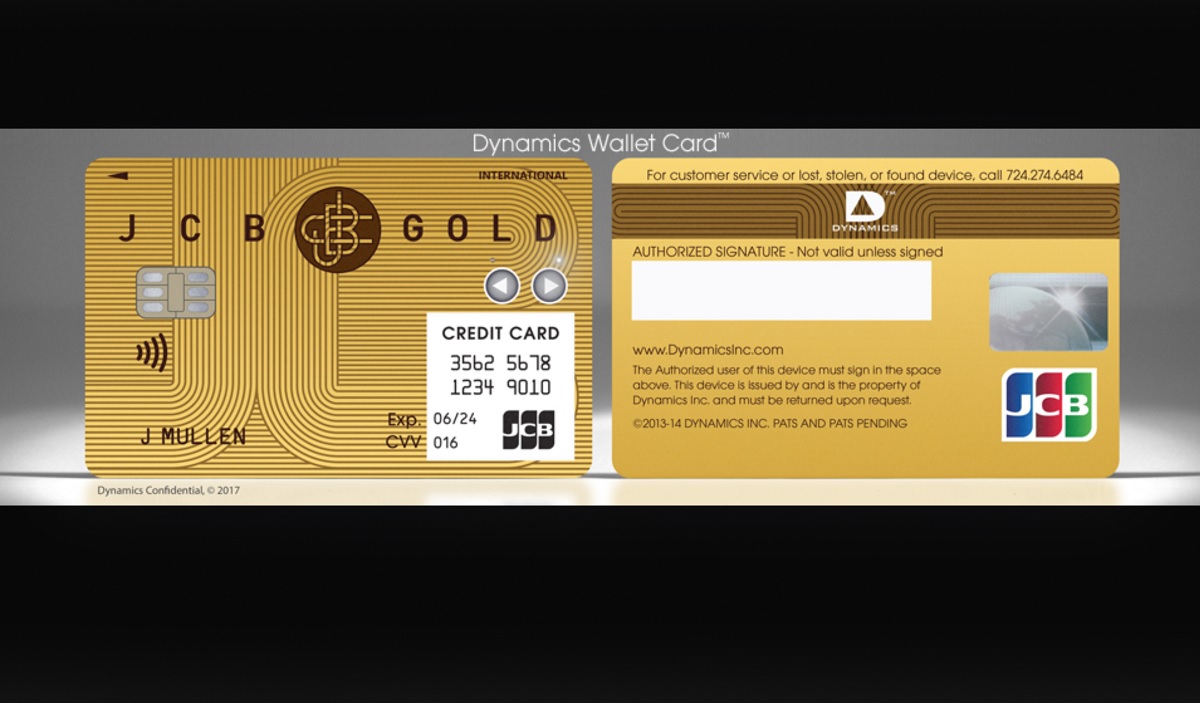
Above: Dynamics card has its own display.
Dynamics wants to bring the credit card and debit card into the 21st century. We still have mag stripes on our cards, and those can be easily stolen and used for fraudulent transactions. Chip cards have helped. But Dynamics has a new Wallet Card that is aimed at bring security and uses to a higher level.
The cards have a built-in computer, a cell phone connection, and even a display with 65,000 pixels.
If you lose the card or report it stolen or forget your pin code, the bank can disable the card through the cell connection and send you a new card. Cards can be couriered to the consumer in a matter of hours, and the consumer can restore the wallet by downloading cards. The speed could reduce fraud losses and prevent purchase delays, Mullen said.
These are just some of the features that are possible on a card that’s connected and has digital processing capabilities. Another is that you can now have multiple cards on one Wallet Card. Consumers can access their debit, credit, prepaid, multicurrency, one-time use, or loyalty cards on a single card with the tap of a button. When you get to a checkout stand, you could choose to pay with points or credit simply by pressing a button on the card. Banks can even target you with discounts if you use a particular account.
Dell Mobile Connect
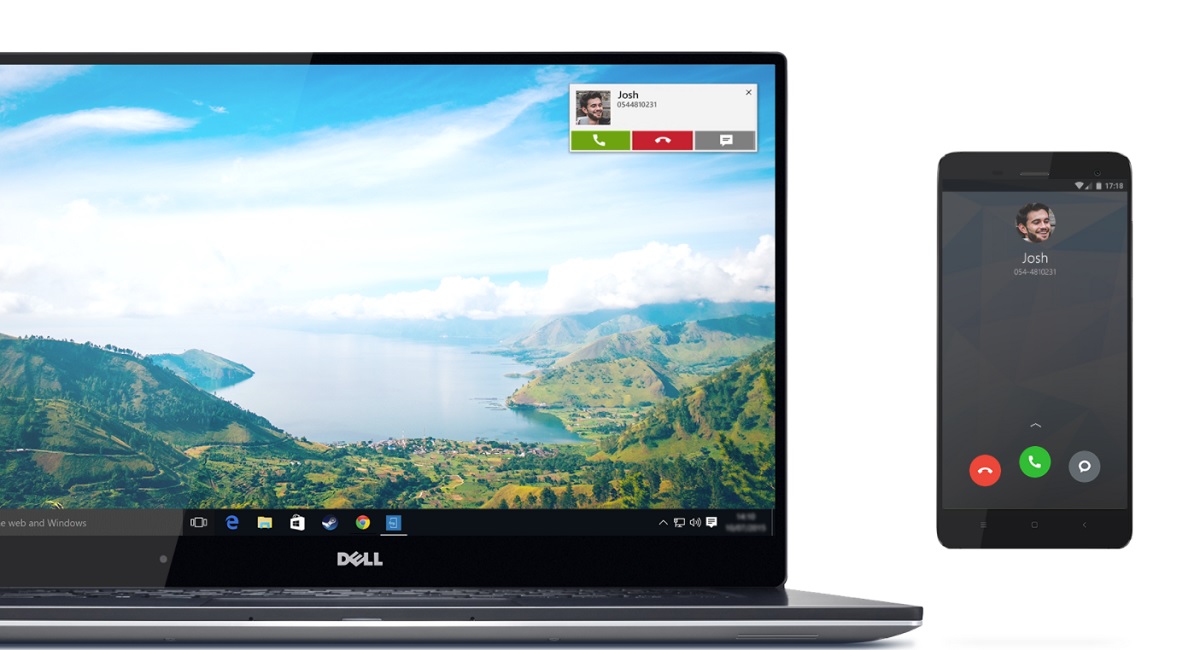
Above: Dell Mobile Connect lets you take phone calls or read text messages on your PC.
Dell Mobile Connect is meant to bridge computers and smartphones. It does so through a direct connection, either through Bluetooth or Wi-Fi Direct. Using that, Dell made it possible for you to use Android apps on your computer, and to perform phone-like functions on the PC.
The reason is that we’re slaves to the notifcations on our phones and computers, but we sometimes forget to look at both of them. With Dell Mobile Connect, you get a notification on your computer when a call is coming in on your phone. You can use your computer to answer the call, or you can dismiss it and keep working. You can even play smartphone games on your computer with a mouse and keyboard.
I like this idea because it smooths the seams between products that were never designed to work together.
Travelmate Robotics
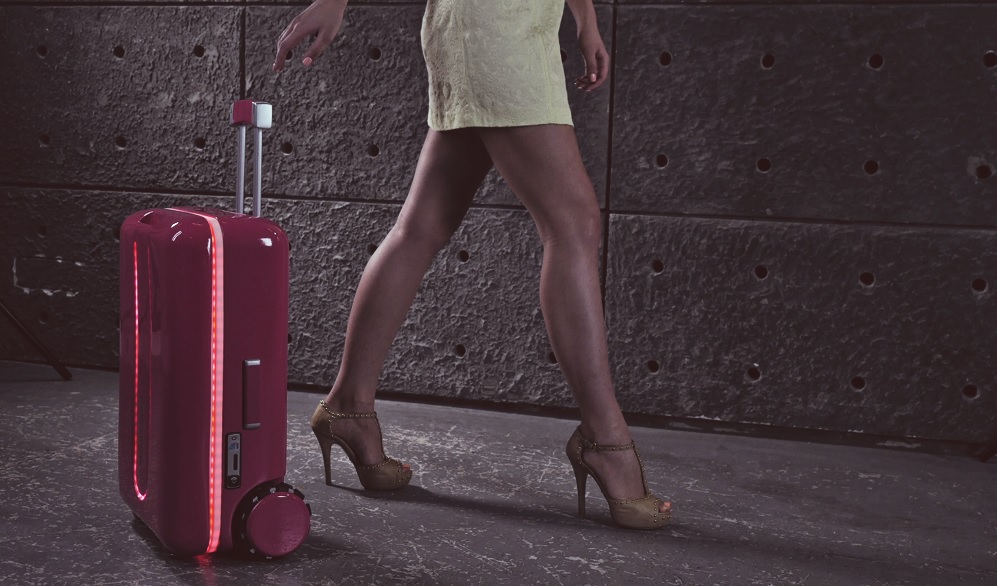
Above: Travelmate’s robot luggage will follow you around.
This idea appealed to me in part because I was dragging my roller bag through the crowds at CES, running over the toes of countless strangers. Travelmate Robotics has created a self-driving suitcase, which is a robot on wheels that follows you around.
If you have cup of coffee and another bag, it’s a hassle to drag your suitcase around. Travelmate has packed it with technology including two USB ports for charging devices, an ergonomic handle, a smart lock, speakers, a battery, and sensors that help it navigate through crowds. Of course, it has a problem for now. It costs $1,100 and up. Hopefully, that will come down as volume sales increase.
Volocopter
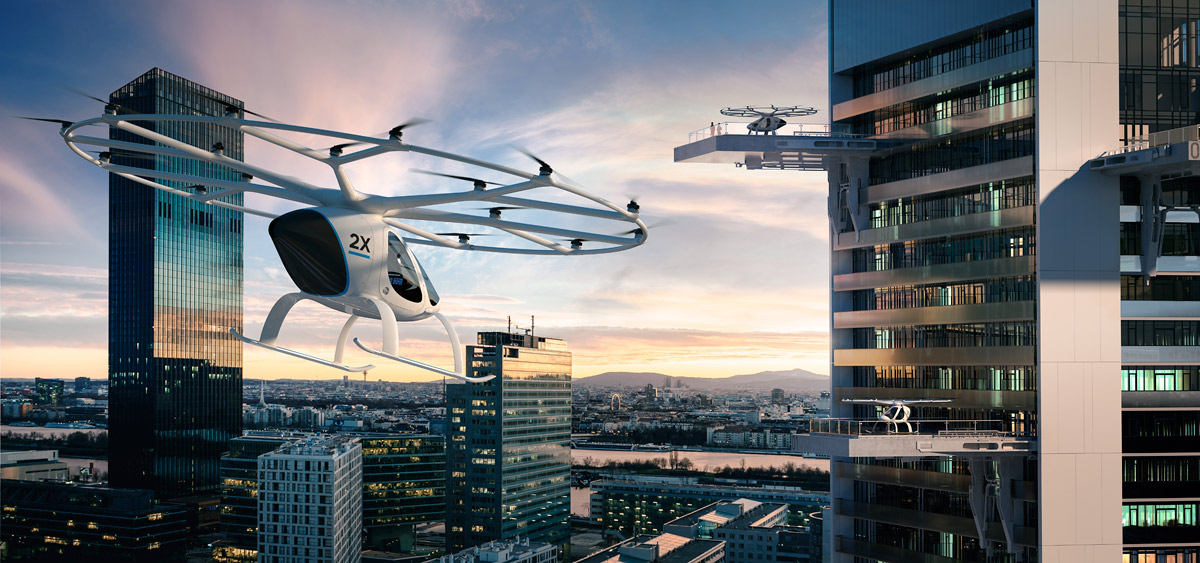
Above: Volocopter
The self-driving future isn’t limited to just roads. The Volocopter made its debut at the keynote speech of Intel CEO Brian Krzanich. He rode in the self-driving two-person helicopter, as it rose vertically in a warehouse without Krzanich touching any controls.
Artificial intelligence might never reassure some of us about its safety, but thrill seekers may be excited to get into a flying machine that controls itself. If the company perfects the machines, we could see vertical traffic like in the science fiction movies The Fifth Element or Star Wars. It’s exciting to see all of the progress in drones lead to more ambitious flying machines.
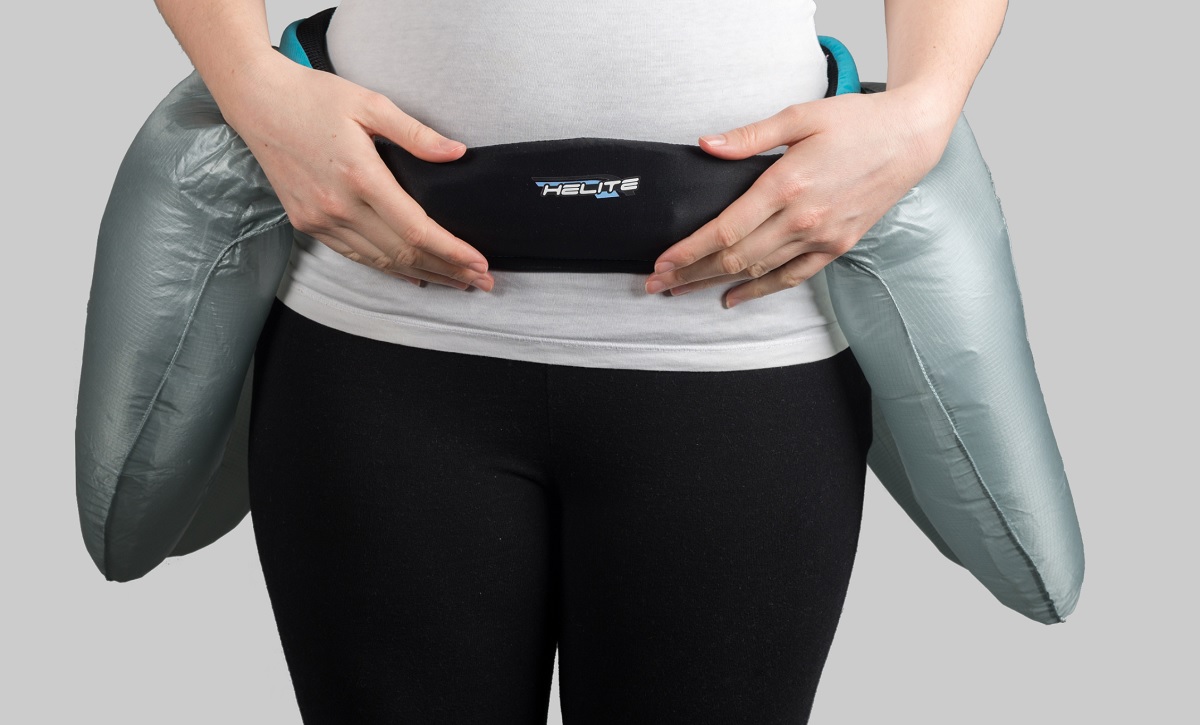
Above: Hip Air deploys airbags if you fall.
My honorable mentions include Hip Air, the new Sony Aibo, Vayyar, Panasonic’s faster airplane Wi-Fi, Liberty Mutual’s Total Home Score, Glowforge, and the Black Box. I didn’t get to see the HTC Vive Pro headset with Wigig wireless adapter, but I’m looking forward to checking it out.


